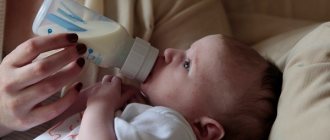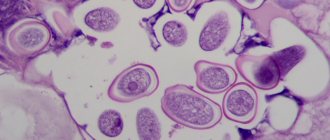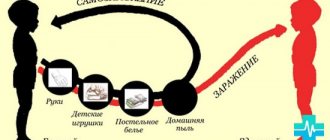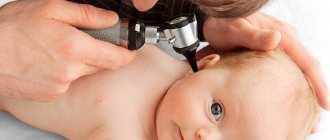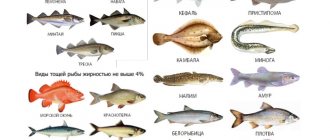Worms are organisms that enter the body through dirty hands, poorly processed and prepared foods. Infants often put their hands in their mouths, toys, everything that is in sight, which is why helminthic infestations in childhood are a common phenomenon. Doctors say that the main period when children are infected with helminthiasis is from 3 to 4 years. However, there are cases when children under one year of age are susceptible to infection with parasites. Thanks to laboratory diagnostic methods, specialists can identify worms in children under one year of age and prescribe a drug therapy regimen. However, there are obvious clinical manifestations of the disease, which indicate that a new resident has settled in the child’s body.
Methods of infection
- the main sources are pets, even if there is no direct contact, the guide can be an adult who does not wash his hands in a timely manner;
- violation of cooking rules, starting from 5-6 months, compotes, purees, raw vegetables and fruits are introduced into the baby’s diet; they must be thoroughly washed;
- lack of hygiene standards; after each diaper change or visit to a public place, you must wash your hands thoroughly;
- dirty toys, household items;
- Personal hygiene items (soap, washcloth, towel) must be individual for the baby.
The main sources endangering the baby's health are adults. Neglecting the simple rule of washing your hands after going outside, going to the store, or going to the restroom becomes the main cause of infection. Treatment of worms in an infant occurs in parallel with treatment of the whole family, otherwise there is a high probability of re-infection.
Types of parasites
There are several types of helminths, but pinworms and roundworms are more common in infants. They belong to the group of roundworms that live in soil, fresh water bodies, the sea, and are found throughout the environment.
The most common type of helminth in infants is pinworms . They look like white worms, the size does not exceed 1-2 cm. Adults lay eggs near the anus. If all hygiene rules are followed, the parasites die on their own within a month.
Re-infection may occur through contact with a carrier, through dirty hands or unwashed toys.
Roundworms are also common in children under one year of age . The size does not exceed 0.5 cm, they are particularly fertile; the female can lay more than 200 thousand eggs per day. The most comfortable living environment is soil. The route of infection is oral, that is, through the mouth. The source can be unwashed vegetables, fruits, animals, as well as all family members in contact with the infant.
Routes of infection
The world of helminths is diverse; in total there are at least three hundred species of parasites dangerous to humans, of which about three dozen are found in our country.
The high prevalence of worms among children requires parents to have certain knowledge about the routes and methods of infection necessary to prevent infestation in all family members.
There are three groups of helminths:
- Contact worms are transmitted through direct communication between people (for example, mother and child) or through the use of common household items. This group includes pinworms - the most common roundworms, the only host of which is humans. The eggs of these worms can survive for several weeks and months in the external environment (dust on books, curtains, toys). A mother with enterobiasis or older children in the family who attend organized groups can infect an infant with pinworms.
- Geohelminths - their eggs must mature in the soil to the invasive stage; they enter the child’s mouth through hands, unwashed fruits and vegetables. In infants, worms of this group can appear in the body from a dirty nipple picked up from the ground, from the mother’s unwashed hands, or from eating freshly prepared purees from poorly washed vegetables or berries. A typical representative of this group are roundworms. Cases of ascariasis have been described in newborn children who became infected from a sick mother while in the womb or during childbirth.
- Biohelminths have a complex life cycle with a change of hosts; people become infected by eating raw fish (liver fluke), lightly salted caviar (wide tapeworm) or insufficiently cooked meat (bovine, pork tapeworm), as well as by communicating with domestic animals (echinococcus). These parasites are rare in infants.
It will also be interesting: How to get rid of worms for an adult
The most common parasites of young children are pinworms, roundworms, and whipworms.
Symptoms
It is difficult to determine the infestation (introduction) of helminths in children under one year of age. Parents should be alerted to a number of symptoms of worms in an infant, which are unusual for the healthy state of the baby.
Signs of enterobiasis (pinworm infection)
- itching and pain in the anal area , the baby may scream and cry when changing a diaper, washing, in some cases small wounds form;
- allergies appear in the form of a rash and irritation on the skin;
- pinworms in infants lead to inflammation of the external genital organs - redness, swelling;
- signs of worms in newborns lead to disruption of digestive processes - vomiting, nausea, diarrhea;
- weight loss is observed due to the absorption of nutrients, vitamins, and minerals by worms;
- The baby is often capricious, cries, sleep is disturbed, and the usual routine is disrupted.
A dangerous consequence of infection is toxic and allergic effects, causing retardation of growth and development. While in the intestines, if left untreated, the parasites begin to migrate to other organs - the liver, bladder, disrupting their functioning. Parents may confuse the symptoms of enterobiasis in a baby with dysbacteriosis and teething. You should tell your pediatrician about any changes in your baby’s behavior.
Signs of infection with ascariasis:
- weakness, malaise, fever up to 38°;
- urticaria appears on the skin;
- dry or cough with phlegm, difficulty breathing;
- disturbances in the functioning of the gastrointestinal tract, unstable stools, changes in appetite;
- The main symptoms of worms in an infant are general weakness, malaise, sleep disturbance, and in some cases, convulsions.
Ascariasis in infants
Ascaris most often reaches the child in the womb, through the placenta from the mother. But in this case, a woman infected with ascariasis should already be under the supervision of a doctor, and increased monitoring of the child’s condition should be established.
Ascaris larvae are able to settle in any organs and poison them, causing inflammation in the lungs, pancreas, gall bladder, liver, and gastrointestinal tract. If you do not rid your child of roundworms after birth, he may die.
The main symptom of ascariasis is the fact that the baby, with normal nutrition, will not gain weight and will lag behind in development. Abnormal bowel movements and diarrhea are possible. At some point he will begin to refuse food. At the same time, the baby will be capricious and cry all the time.
Sometimes dead worms appear in feces or vomit, since ascariasis in the late stage provokes vomiting.
But, despite the fact that the worm has left the body, treatment is necessary, because it is unknown how many worms the baby still has in the body. In this article you will not find recipes on how to treat a baby, because a pediatrician must diagnose and treat. The symptoms of some diseases are not always clear. Self-medication is unacceptable with infants.
Treatment
To diagnose helminth infestation, several tests must be taken. Feces for worm eggs and scrapings for enterobiasis are examined three times at intervals of several days to confirm the results. The purpose of the method is to catch the moment of reproduction in order to make a diagnosis.
Additional tests can also confirm the presence of helminths. An analysis for dysbacteriosis reveals a violation of the normal intestinal microflora, low hemoglobin in a general blood test. If there are signs of allergies, blood is donated for immunoglobulins and helminth markers.
The famous pediatrician Komarovsky recommends treating worms in infants only after diagnosis. Signs of worms in newborns should force parents to see a doctor for a full examination of the baby.
Treatment of worms in an infant is carried out under the supervision of a doctor. Only a doctor, based on the child’s medical history, can select the most effective and safe drugs.
Most anti-helminth drugs are prescribed to children from 2-3 years of age.
Parents must strictly follow the therapy regimen.
To treat pinworms, drugs such as Piperazine, Pyrantel, Mebendazole, Vormin, Vermox, Levamisole (has immunomodulator properties) are used. If symptoms of enterobiasis are detected in an infant, only the doctor determines the dosage and recommends a menu for the duration of treatment. Children up to six months old receive their usual diet - breast milk or artificial milk. When carrying out therapy, meat, cookies, and bread are removed from the diet of children of the older age group.
Treatment of ascariasis - Decaris is prescribed (10 mg per kg of body weight) with meals; worms are successfully removed from infants in 80-100% of cases. A follow-up test is scheduled one month after treatment.
Traditional methods of treatment do not affect the formation of immunity and have a gentle effect on the body. To treat enterobiasis and ascariasis, a decoction of wormwood is used. After preparing and straining the broth, give your baby an enema in the evening, after the last feeding. Repeat the procedure for 3 days. Pumpkin seeds help; you can prepare a weak decoction and give your baby 2-3 teaspoons of water throughout the day.
Causes
The baby is in close contact with mom and dad. The main cause of helminthic infestation is considered to be non-compliance with personal hygiene rules. This includes not only unwashed hands, but also poorly processed foods that children are given to eat. Pets are another danger. In close contact with an untreated animal, the risk of developing helminthiasis increases twofold. Parasites are found on the paws of animals, fur, and upon contact with children, the parasite eggs enter the baby’s body.
If a pregnant woman was infected with worms, then the risk that the fetus will be infected is high. The larvae are carried in the blood through the organs and reach children through the placental barrier. As a consequence: the baby is born with a helminthic infestation, so it is not surprising that worms appeared in a month-old baby. The most common routes of infection in a child are:
- Contact with infected objects.
- Playing outside.
- Infected animal.
- Eating poorly processed foods.
- Babies put everything new and interesting into their mouths, so worms in a one-year-old child do not surprise doctors.
It may also be interesting: What to do if a child has worms
Children under one year of age are also not protected from the risk of invasion, since they enjoy communicating with animals, tasting sand, and tasting new things. Doctors can diagnose pathology at an early stage. However, there are obvious clinical manifestations that indicate that uninvited guests have taken up residence in the body.
Children are unable to take care of personal hygiene. All responsibility rests with the parents. Whether infants can have worms depends on the adult.
Prevention measures:
- Hygiene procedures are regularly carried out, washing children under running water in the morning and evening;
- Before breastfeeding, a woman should wash her hands, and also during the day, before picking up the baby;
- thorough washing of products;
- a ban on communication with yard animals; pets must undergo antiparasitic therapy;
- artificial feeding involves the use of high-quality boiled water and daily sterilization of the bottle;
- meat and fish must be heat treated for at least half an hour.
As a preventive measure, drugs are prescribed to children starting from 1.5 years old; certain medications can reduce the likelihood of infection. For babies under one year old, it is recommended to follow basic hygiene rules.
